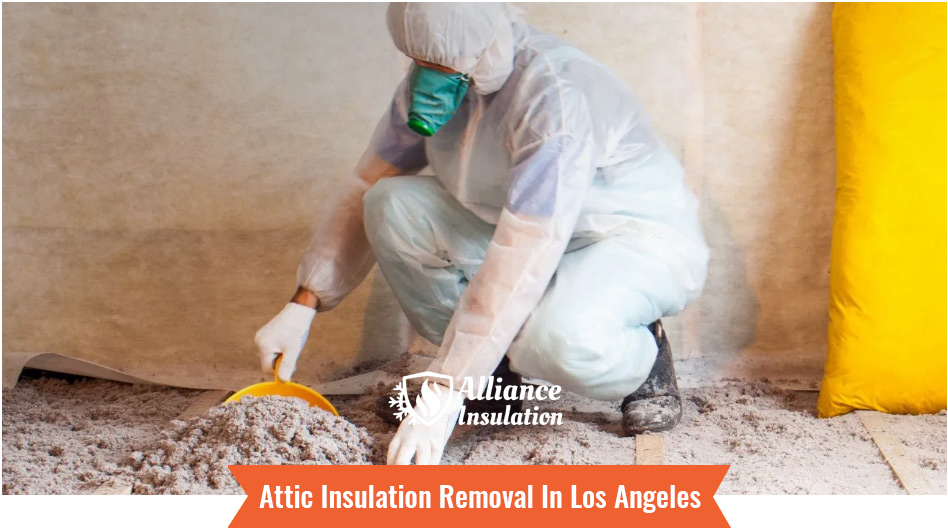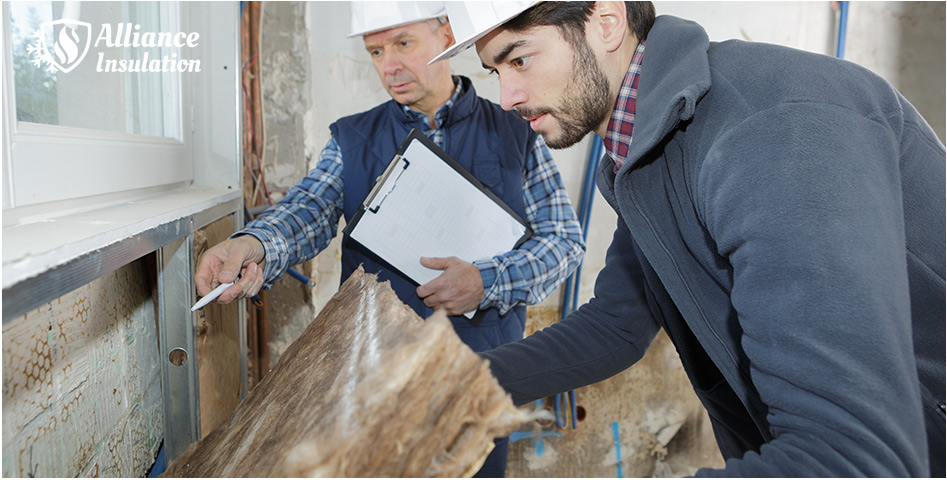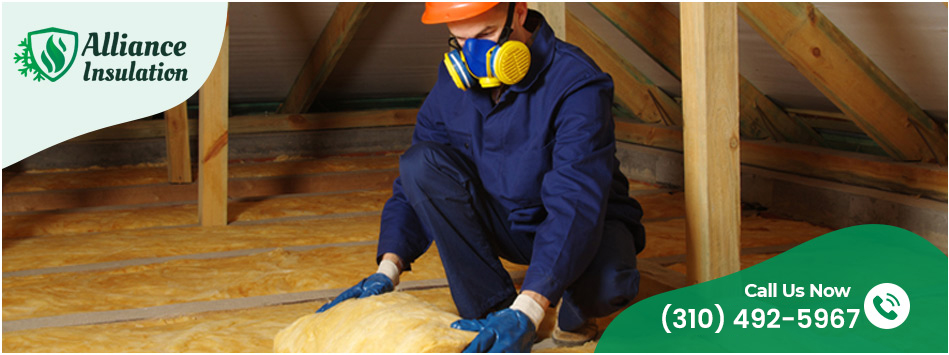
Attic Insulation Removal in Los Angeles
Attic insulation removal in Los Angeles is an essential process that helps maintain a comfortable and energy-efficient home. Over time, insulation can deteriorate, become contaminated with pests, or develop mold and moisture issues. Removing old or damaged insulation becomes necessary to restore the insulation’s effectiveness and ensure a healthy living environment
It is recommended to get professional insulation removal in Los Angeles when upgrading insulation, experiencing high energy bills, or encountering signs of moisture or pest infestation. Hiring a professional contractor like Alliance Insulation for attic insulation removal is crucial as they possess the expertise, specialized equipment, and safety measures required for efficient and safe removal. Get complete support to properly assess the insulation condition, remove it, and ensure a clean and ready-to-install space for new insulation, maximizing energy efficiency and indoor comfort.
Get Complete Solutions to Remove Attic Insulation
At Alliance Insulation, we offer various services for attic insulation removal in Los Angeles to effectively and safely remove old, damaged, or contaminated insulation. Some of our services include
Assessment and Inspection
Assess the condition of the attic insulation and conduct a thorough inspection to identify any issues or contaminants present.
Safe Removal
Use proper techniques and equipment to remove the insulation without causing damage to the attic or releasing contaminants into the living space. Ensure compliance with safety protocols and environmental regulations.
Contaminant Removal
If the insulation is contaminated with mold, pests, or other harmful substances, you can take measures to remove these contaminants and sanitize the area to prevent further issues.
Debris Cleanup
After removing the insulation, get help to clean up the attic space by properly disposing of the removed insulation and any debris generated during the removal process.
Preparation for Reinstallation
If the attic will be re-insulated, you can prepare the space by addressing any underlying issues, ensuring proper ventilation, and creating a clean and suitable environment for the installation of new insulation.
Post-Removal Assessment
Perform a post-removal assessment to evaluate the effectiveness of the insulation removal process and ensure that the attic is ready for the next steps, such as reinstallation or other renovations.
Insulation Removal Timelines
Here’s a table with different attic insulation materials and the estimated time taken to remove them
| Attic Insulation Material | Time Taken for Removal |
|---|---|
| Fiberglass Batts | 1-2 days |
| Blown-In Cellulose | 1-2 days |
| Spray Foam Insulation | 2-3 days |
| Vermiculite Insulation | 3-4 days |
| Rockwool Insulation | 1-2 days |
Factors Determine the Cost of Removing Insulation
The cost of removing attic insulation can vary depending on several factors, including the size of the attic, the type and condition of the insulation, the complexity of the job, and the location. Generally, the cost of attic insulation removal is determined by

Insulation Type
Different insulation materials require different removal methods and may have varying costs associated with their removal. For example, removing asbestos-containing insulation may involve additional safety measures and specialized disposal, leading to higher costs.
Attic Size
The larger the attic, the more insulation there is to remove, which can increase the overall cost of the removal process.
Accessibility
If the attic is difficult to access or has limited space to work in, it may require additional time and effort, which can impact the cost.
Contamination or Hazards
If the insulation is contaminated with mold, pests, or other hazardous substances, the removal process may involve additional safety precautions, specialized equipment, and proper disposal methods, which can contribute to higher costs.
Additional Services
If there are any underlying issues, such as moisture problems or damaged areas, that need to be addressed during or after the removal process, it may require additional services and incur additional costs.
The Right Time of Year to Remove Attic Insulation?
The ideal time to remove attic insulation may vary depending on several factors, including climate, the type of insulation, and your specific circumstances. However, there are some general considerations to keep in mind
Moderate Weather
It is advisable to choose a time of year when the weather is moderate. Extreme temperatures, whether hot or cold, can make working in the attic uncomfortable and may affect the efficiency of the removal process.
Off-Peak Season
Many homeowners opt to remove attic insulation during the off-peak season when contractors are less busy. This can potentially result in better availability, more competitive pricing, and faster scheduling.
Non-Rainy Periods
It is important to select a time when the weather forecast indicates a lower chance of rain or storms. Rainwater entering the attic during insulation removal can cause damage and complicate the process.
Attic Insulation
To ensure a safe and effective attic insulation removal process, we follow these general steps
Attic Insulation Removal in Los Angeles – The Process
Assess the Attic
The process begins by assessing the condition of the attic and the insulation. Identify any signs of damage, contamination, or moisture issues. The team determines the type of insulation material present.
Prepare the Workspace
The area around the attic access point is prepared to create a workspace with sufficient lighting. Ensure proper ventilation by opening windows or using fans to improve air circulation.
Safely Remove Insulation
The selected method (e.g., insulation removal vacuum, machine, or manual scraping) will be used to remove the insulation. Manufacturer instructions and safety guidelines are followed when using the equipment. We will take care to minimize dust and airborne particles during the removal process.
Handling Contaminated Insulation
If the insulation is contaminated with mold, pests, or other hazards, appropriate precautions will be taken. Affected areas will be sealed off and recommended guidelines will be followed for handling and disposal.
Clean Up and Dispose
After removing the insulation, the attic space will be cleaned thoroughly to remove any debris or residual insulation. The removed insulation will be placed into disposal bags or containers following local regulations for proper disposal.
Post-Removal Inspection
The attic will be inspected to ensure all insulation has been successfully removed. Any underlying issues, such as moisture problems or damaged areas, will be addressed before considering reinstallation of insulation.
Faq’s
R-value measures the insulation’s thermal resistance, indicating its effectiveness in preventing heat transfer. The higher the R-value, the better the insulation’s thermal performance. Different regions have recommended R-values based on climate conditions. Consult with our team to determine the appropriate R-value for your attic insulation.
The recommended insulation thickness, or depth, depends on the insulation type and the desired R-value. As mentioned earlier, different regions have recommended R-values. Generally, attic insulation should be between 10 and 14 inches in thickness for fiberglass batts, or as per manufacturer recommendations for blown-in or spray foam insulation.
In many cases, it’s possible to add insulation over existing insulation to increase its effectiveness. However, factors such as the condition and type of existing insulation, as well as any moisture or ventilation issues, should be assessed by our team. They can guide you on the best approach for maximizing insulation performance.
The lifespan of attic insulation depends on various factors, such as the insulation type, environmental conditions, and maintenance. Fiberglass and cellulose insulation can last for several decades, while spray foam insulation can have a longer lifespan. However, over time, insulation effectiveness may decrease, and it’s beneficial to periodically assess and upgrade insulation as needed.
Get a Free Quote


